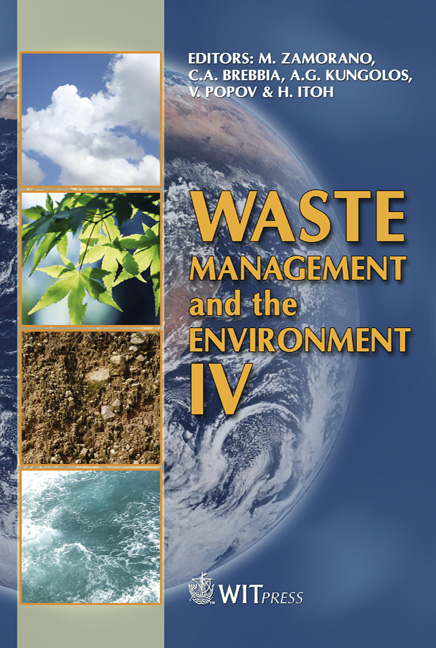Biohydrogen Production By Clostridium Beijerinckii
Price
Free (open access)
Transaction
Volume
109
Pages
10
Page Range
123 - 132
Published
2008
Size
585 kb
Paper DOI
10.2495/WM080141
Copyright
WIT Press
Author(s)
M. T. Chmiel & V. Yargeau
Abstract
Climate change, along with the rapid depletion of petroleum and natural gas reserves, has prompted many to search for renewable and environmentally friendly energy options. Hydrogen has been identified as a possible alternative to fossil fuel energy. Biological hydrogen production from organic substrates can be achieved by a two-stage approach combining the anaerobic and photosynthetic continuous processes in series. As a first step, an investigation of the production of hydrogen from glucose by Clostridium beijerinckii was conducted. A study examining the effect of initial pH (range 5.7 to 6.5) and COD loading (range 1 to 3 g/L) on the specific conversion and specific hydrogen production rate has shown interaction behaviour between the two independent variables. The highest conversion of 10.3 mL H2/(g COD/L) was achieved at pH of 6.1 and COD of 3 g/L, whereas the highest production rate of 71 mL H2/(h*L) was measured at pH 6.3 and substrate loading of 2.5 g COD/L. In general, there appears to be a strong trend of increasing hydrogen production rate with an increase in both substrate concentration and pH. The current work focuses on the identification of soluble metabolites such as ethanol, acetate and butyrate in order to evaluate the possible shift in metabolism resulting from varying initial conditions and micro-nutrients availability. The results obtained so far, along with some preliminary experiments using industrial wastewater as substrate, indicate the possible use of such waste streams for the production of biohydrogen. Keywords: biohydrogen, wastewater, clostridium.
Keywords
biohydrogen, wastewater, clostridium.





